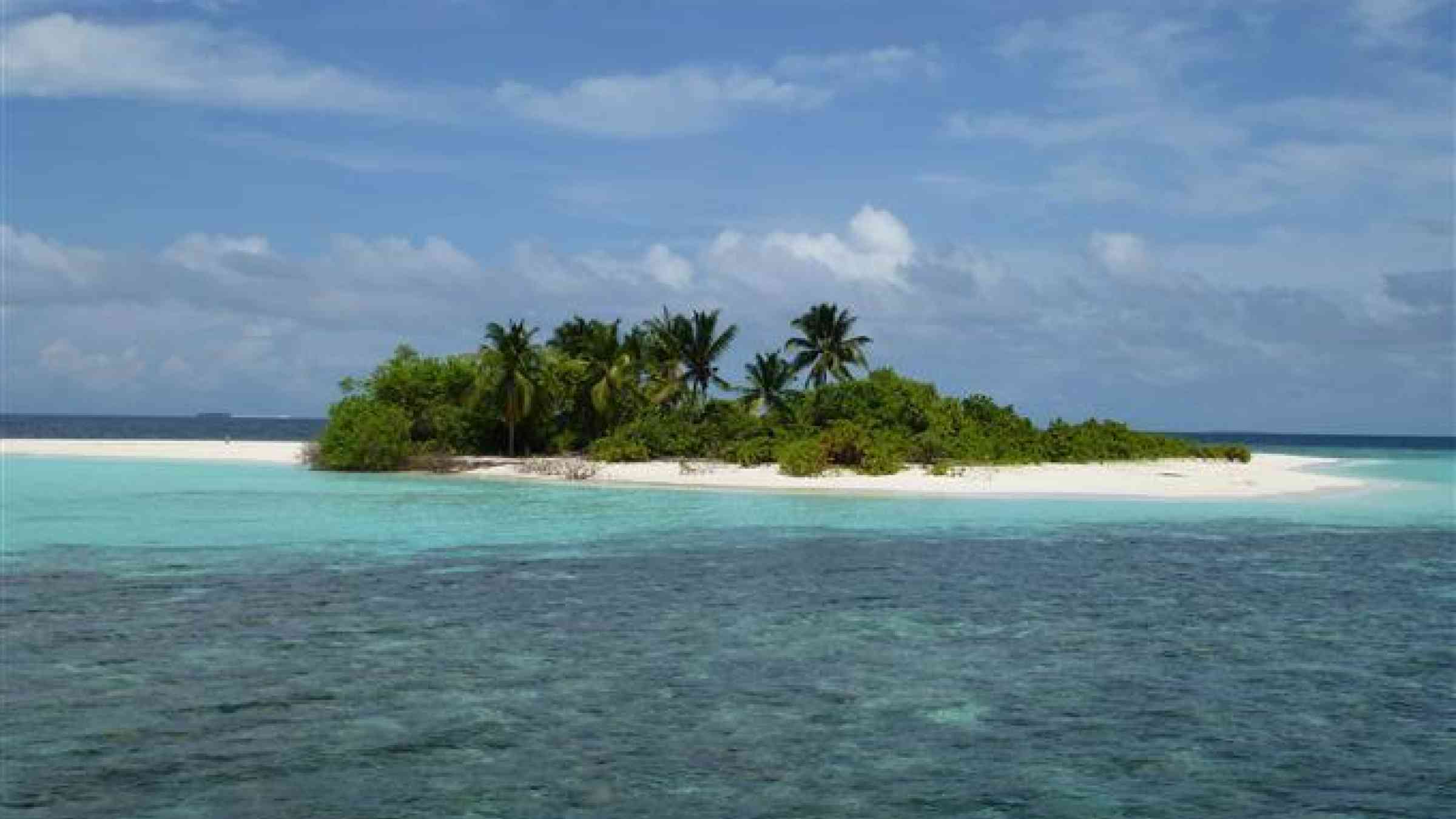Please help us improve PreventionWeb by taking this brief survey. Your input will allow us to better serve the needs of the DRR community.
Stepping up resilience in the Maldives

By Sarah Wade-Apicella
MALÉ – The Indian Ocean nation of the Maldives is working hard to implement the Sendai Framework for Disaster Risk Reduction, seeing it as critical to its wider efforts to make development sustainable and deal with the challenge of climate change.
Making the link between the Sendai Framework, the Sustainable Development Goals and the Paris Agreement on climate change is a key factor for the success of all three cornerstones of the ambitious global agenda adopted in 2015 and running through to 2030.
The Sendai Framework aims to bring about substantial reductions in disaster fatalities, numbers of affected people, and economic damage. To do so, it calls on countries to have national and local disaster risk reduction strategies in place by 2020. The issue will also be in the spotlight next month at the 2017 Global Platform for Disaster Risk Reduction, in Mexico.
Given the need for coordinated action on all parts of the 2030 agenda, it is vital to bring together a wide range of players.
Partnership, coherence and community were at the centre of discussions during a three-day workshop in the Maldives, co-organized last month by the National Disaster Management Centre (NDMC) and the UN Office for Disaster Risk Reduction Global Education and Training Institute (UNISDR GETI). It drew 35 representatives across ministries – including environment and energy, housing and infrastructure, tourism and the national statistics bureau – as well as stakeholders from local government, the Maldivian Red Crescent Society, civil society and the private sector.
“This workshop is very crucial as it will help us draw a plan for implementation of the Sendai Framework for Disaster Risk Reduction in the Maldives, working out the necessary guidelines for all agencies and ministries to ensure the integration of disaster risk reduction in all sectors,” said Mr. Mohamed Zuhair, Minister of State, Ministry of Defence and National Security, in his keynote address.
Minister Zuhair recalled the Fifth Assessment Report of the Intergovernmental Panel on Climate Change, which highlighted that each of the last three decades has been successively warmer.
“The science is clear. Climate change and its implications are real. The Maldives is one of lowest-lying nations in the world, and among the most vulnerable countries vulnerable to climate risk related disasters. For the Maldives, working on disaster risk reduction and becoming more resilient is tied to our very existence,” he said.
He confirmed the Maldives’ current disaster risk reduction and climate change adaptation actions, yet acknowledged that much more work is to be done. Recalling an African proverb, he called for participants to be able to understand more, and do more to promote disaster risk reduction and climate change adaptation, saying, “If you want to go far, go together.”
This sentiment was reiterated by Ms. Fathimath Thasneem, Deputy Minister of the Ministry of Defence and National Security and Head of the NDMC, in her welcoming remarks: “It is only through strong partnerships between government and community that we can harmonize action towards resilient communities. Community-based activities are a must, and promoting disaster risk reduction is critical.”
The Maldives is made up of 1,200 islands, of which 200 are inhabited, grouped in 26 atolls with a total coastline of 644 kilometres at an average 1.5 metres above sea level.
Despite its position, the country of around 400,000 people has a generally moderate hazard risk profile. It most frequently experiences man-made fire in its highly and rapidly urbanized areas, and has some risk of earthquake and tsunami.
The Maldives is also no stranger to the threats posed by climate change, with significant sea level rise projected by 2050, and is already experiencing increased rainfall and flooding, cyclonic winds and storm surges.
According to workshop participants, however, most islanders don’t yet perceive the risks. This may be due to the natural protection of the Maldives’ vast coral reef and the fact that it has faced only a few major disasters – the 2004 Indian Ocean tsunami, for example, killed an estimated 108 Maldivians.
Committed to build island resilience and invest in community-based disaster risk management, the government of the Maldives has made the implementation of the Sustainable Development Goals a key priority, said Ms. Aishath Saadh, Deputy Director General Ministry of Environment and Energy. She highlighted how 10 of the 17 goals are related to disaster risk reduction, and underscored how Sendai Framework implementation can influence political commitment and stimulate investment.
The Sendai Framework has seven targets and four priorities for action. Four of its targets are embedded in the proposed indicators of three of the Sustainable Development Goals: Goal 1 on poverty reduction, Goal 11 on urban resilience and Goal 13 on climate change. One is common to all three goals: Sendai Framework target calling for an increase in the number of countries with national and local disaster risk reduction strategies.
Explore further
Please note: Content is displayed as last posted by a PreventionWeb community member or editor. The views expressed therein are not necessarily those of UNDRR, PreventionWeb, or its sponsors. See our terms of use
Is this page useful?
Yes No Report an issue on this pageThank you. If you have 2 minutes, we would benefit from additional feedback (link opens in a new window).